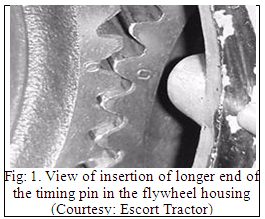Fuel Injection Pump Calibration Pdf Download ((EXCLUSIVE))
Fuel Injection Pump Calibration Pdf Download

Downloadable file links:
Here is a possible title and article for your keyword:
How to Calibrate Fuel Injection Pumps for Diesel Engines
Fuel injection pumps are devices that deliver fuel to the cylinders of diesel engines at a precise pressure and timing. They are essential for the performance, fuel efficiency and emissions of diesel engines. However, fuel injection pumps need to be calibrated periodically to ensure optimal operation and avoid problems such as poor combustion, engine knock, smoke and power loss.
Calibration of fuel injection pumps involves adjusting the fuel quantity, injection timing and injection pressure according to the specifications of the engine manufacturer. Calibration can be done manually or with the help of specialized equipment such as test benches, flow meters, pressure gauges and electronic controllers. The calibration process may vary depending on the type and model of the fuel injection pump, but generally it consists of the following steps:
Remove the fuel injection pump from the engine and mount it on a test bench.
Connect the fuel supply and return lines, as well as the electrical connections if applicable.
Set the test bench speed and load according to the engine operating conditions.
Measure the fuel delivery of each injector nozzle at different injection angles and compare them with the standard values.
Adjust the fuel quantity by changing the position of the delivery valve or the plunger stroke.
Adjust the injection timing by changing the position of the camshaft or the control rack.
Adjust the injection pressure by changing the spring tension or the nozzle opening pressure.
Repeat the measurements and adjustments until all parameters are within the acceptable range.
Reinstall the fuel injection pump on the engine and check for leaks and proper operation.
Calibration of fuel injection pumps is a complex and delicate task that requires skill, experience and accuracy. It should be done by qualified technicians following the instructions of the engine manufacturer and using appropriate tools and equipment. Calibration of fuel injection pumps can improve the performance, fuel economy and emissions of diesel engines, as well as extend their service life and reduce maintenance costs.
Here are some additional paragraphs for your article:
Types of Fuel Injection Pumps
Fuel injection pumps can be classified into different types based on their design and function. The main types of fuel injection pumps are:
Inline fuel injection pump: This type of pump has a separate plunger and barrel for each cylinder of the engine. The pump is mounted on the engine block and driven by a gear or chain from the camshaft. The fuel quantity and timing are controlled by the position of the plunger and the shape of the cam. Inline fuel injection pumps are commonly used in large diesel engines with high power and torque requirements.
Distributor fuel injection pump: This type of pump has a single plunger and barrel that rotates inside a distributor head. The pump is mounted on the engine block and driven by a gear or chain from the camshaft. The fuel quantity is controlled by the position of the plunger and the timing is controlled by the position of the distributor head. Distributor fuel injection pumps are commonly used in small and medium diesel engines with moderate power and torque requirements.
Continuous fuel injection pump: This type of pump has a constant flow of fuel that is regulated by a pressure control valve. The pump is mounted on the engine block and driven by an electric motor or a belt from the crankshaft. The fuel quantity and timing are controlled by solenoid valves that open and close according to the signals from an electronic control unit. Continuous fuel injection pumps are commonly used in modern diesel engines with high efficiency and low emissions requirements.
Symptoms of a Bad Fuel Injection Pump
A fuel injection pump is a vital component of a diesel engine that needs to be maintained properly. A faulty or failing fuel injection pump can cause various problems that affect the performance, fuel economy and emissions of the engine. Some of the common symptoms of a bad fuel injection pump are:
Hard starting or no starting: A bad fuel injection pump can prevent the engine from starting or make it difficult to start. This can be due to low or no fuel pressure, incorrect fuel quantity or timing, or air in the fuel system.
Loss of power or poor acceleration: A bad fuel injection pump can reduce the power output or responsiveness of the engine. This can be due to low or inconsistent fuel pressure, incorrect fuel quantity or timing, or clogged or leaking injectors.
Excessive smoke or noise: A bad fuel injection pump can cause excessive smoke or noise from the exhaust or the engine. This can be due to high or erratic fuel pressure, incorrect fuel quantity or timing, or worn or damaged injectors.
Increased fuel consumption or leakage: A bad fuel injection pump can increase the fuel consumption or cause fuel leakage from the system. This can be due to high or fluctuating fuel pressure, incorrect fuel quantity or timing, or faulty or leaking seals or valves.
If you notice any of these symptoms, you should have your fuel injection pump checked and repaired by a qualified technician as soon as possible. A bad fuel injection pump can damage other components of the engine and compromise its safety and reliability.
12c6fc517c